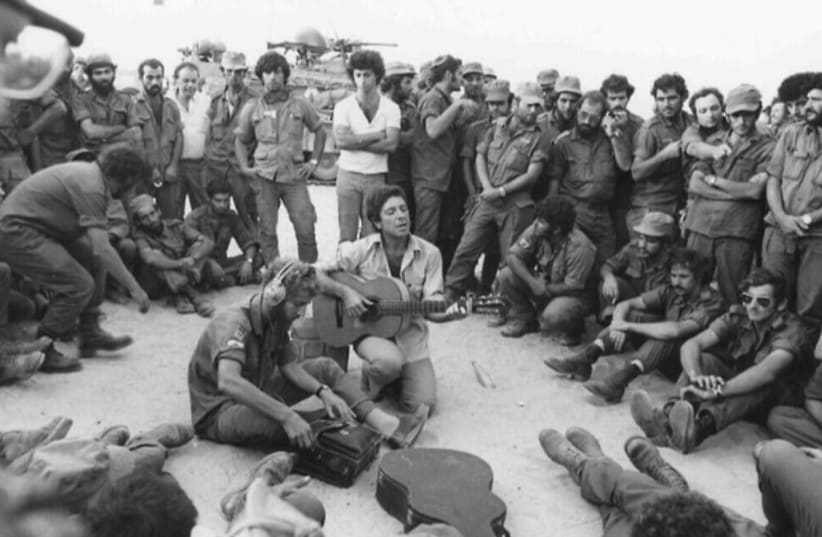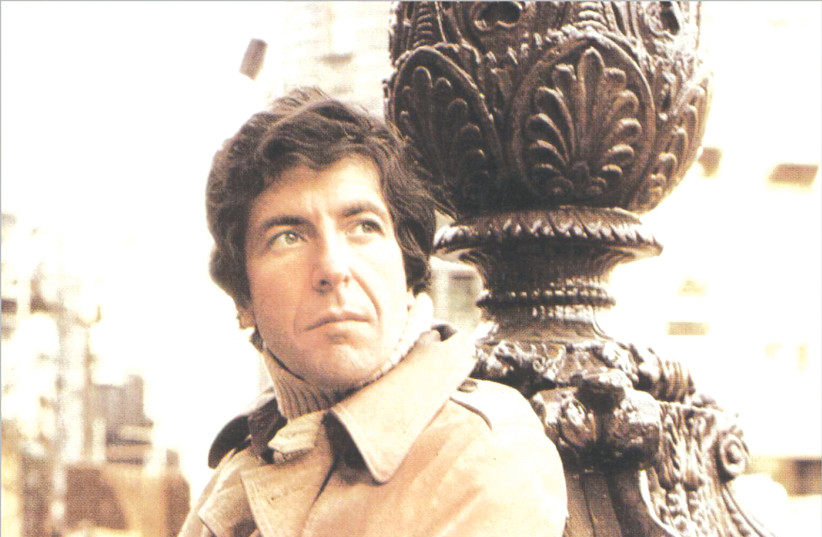The first time Leonard Cohen visited Israel was not during the Yom Kippur War. A year and a half earlier, in April 1972, he climaxed a tour of mostly problematic shows, including one in Berlin, in Tel Aviv. The concert there ended abruptly when fighting broke out. That particular concert was filmed, including backstage improprieties, which no doubt added to the singer’s notoriety. The final show of that tour was in Jerusalem. There, unable to focus, not connecting to his audience, he began to preach Kabbalah; then he walked off. Immediately the audience was offered a refund, but instead chose to sing. And they sang and they sang and they sang, until the star, upset as he was, returned, and sang with them, and then for them.
Jerusalem is truly a wondrous city. Cohen and his band, tears flowing, thanked the audience, and left with dignity. Could that have been where his pintele yid (Jewish spark) emerged? Maybe not quite yet. What might be called his epiphany visit happened the following year, among the boys and girls caught off guard on the afternoon of October 6, 1973, by Syrian tanks suddenly rolling down the Golan Heights toward the Jordan Valley, and Egyptian planes suddenly crossing the Suez Canal into the Sinai Desert. Just kids they were, mid-prayer in the synagogues, or lollygagging on the beaches, suddenly losing arms and legs and lives. Leonard Cohen was there, guitar in hand, seeking in the foggy, smoky, dusty, dark battlegrounds little clusters of an audience that needed him to sing his songs.
The title of this new book, Who By Fire: War, Atonement, and the Resurrection of Leonard Cohen, by Matti Friedman, references what is considered the most important prayer in the Yom Kippur liturgy. As it is being prayed, God is sealing in His book His decision for each of His children for the coming year: who will experience trial and tribulation, and who fame and fortune; who will be humbled, who honored; who will be born, and who will die. Ordained causes of death are listed: plague; famine; pestilence; fire; water. In Israel that year, this prayer was interrupted by sirens. While in other time zones in other countries the Jewish people prayed, in Israel the harshest of the judgments had begun. The author pulls no punches with his title. This is going to be a bumpy ride.
During this period Leonard Cohen lived in Hydra, a town situated on the tip of one of the fingers of Greece that reaches into the Mediterranean. Odd name for a town, after a mythological beast with 10 heads, one of them immortal. Or perhaps it was named for the other Hydra, a constellation in the Southern Hemisphere. Either connection befits an enigmatic person who, consciously or not, makes primeval choices. Israel is attacked on the holiest day of the Jewish year. So Leonard decides to go to Israel. Perhaps he thought he was needed there more than in Hydra with his common-law wife and little son. As she walked along with him to the port they screamed arguments and insults at each other. Cohen was embarrassed, as all the regulars on the street knew them. He had hoped she would bless him. She didn’t.
Before long he was in the Sinai Desert. He was in the midst of goings-on that have been scantily documented, where the kids in fatigues still referred to each other as boys and girls. Pilots who earlier in the day had been fasting, return from bombing missions on the verge of fainting. Reservists in some cases assembled themselves, and these undocumented units carried out missions, with fewer returning from each foray. In the face of the kill-or-be-killed truth of war, some of these kids had to view and do unspeakably ruthless actions. Decades later, and only through Friedman’s sensitively prodding interviews and research, is it revealed what excruciatingly painful memories the music needed to assuage.
This story about a music icon took place half a century ago. If the time frame were current, a book as artfully crafted as this could not happen. The plethora of information available via communication technology prevents it. Only by painstakingly sifting through boxes of photographs, mementos, faded news clippings, private journals and keepsakes, public and family archives, and then patiently coaxing memories from aging seniors can such word pictures as appear here be culled. Nowadays, widely circulating public journaling is reduced to trivia, like last year’s sports scores. Here, Friedman’s chapters are like little drawings in black and white, each one an exquisitely designed artistic unit in itself. He has sensitively portrayed a libidinous man, conflicted, but a poet, a priest, and perhaps even a prophet. ■
Who By FireMatti FriedmanSpiegel & Grau (US), Penguin Random House (Canada), Giuntina (Italy), Kinneret (Israel)224 pages, NIS 97.93

